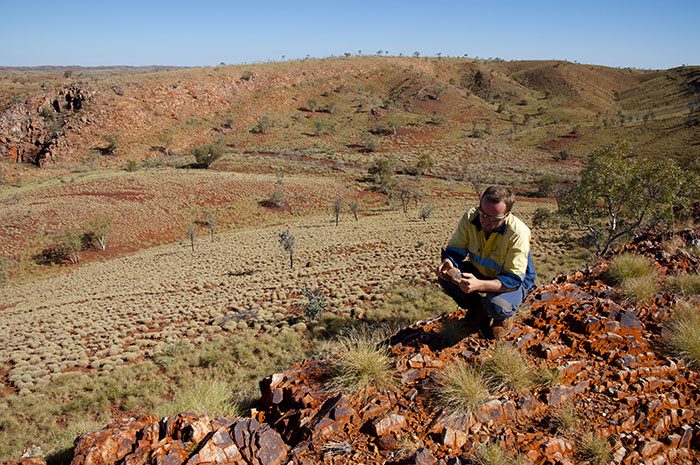Three key takeaways from AusIMM’s Mining Geology Conference
The recent Tenth International Mining Geology Conference had a great feeling about it. There was a strong sense of people and organisations sharing their valuable insights – both the good and the bad – for the benefit of the industry.
Held in Hobart, Tasmania from 20-22 September, the theme of the conference was “Setting New Standards” focussing on opportunities around formal work process standards and improving approaches to mining geology.
Throughout the conference, three themes stood out for me: productivity in the mining industry, the changing role of geologists in the mine and the issue of compliance and reporting to international standards.
Productivity is critical in a tightening industry
As an industry, despite the introduction of many new innovations, we seem to be working harder, not smarter, producing more volume with less productivity. Productivity has decreased since 2000 and is now being overtaken by agriculture and retail.
Productivity gains are being sought in all parts of the mining process. There is an increased interest in reconciling the mill back to the resource to reduce loss of assets along the process and improve efficiencies.
There are technologies that consider impacts of each stage or specialist area (GIM, material movement, stockpile management, etc), but bringing these systems together to try to address the issue of improving productivity is the ongoing challenge. Each company has its own way of creating a more connected mine.
acQuire has been focussing on this topic throughout the year and you can find out more about our view of the connected mine with technology partners, REFLEX and ARANZ Geo.
Staying relevant as a geologist
The future for geologists is changing as things like automation and machine learning come into play.
Ian Lipton, Principal Geologist at AMC Consultants, delivered a presentation on the future of professionals in mining geology and how to stay relevant.
Lipton believes, whilst the way geologists interact with the rest of the organisation is changing, it’s the functions performed by technicians facing the highest risk of automation.
He said cross disciplinary thinking and knowledge sharing delivers better outcomes than siloed thinking. Collaborating on research and technology will also be a key contribution from leading geologists, for example with AMIRA, mining3, CRCOre, Unearthed, GMSG and METS Ignited.
Lipton said effective influencing skills and leadership will become even more important. Geologists will need to be able to articulate and communicate geological uncertainty to stakeholders better.
Jill Terry, Vice President Geoscience, Geoscience Centre of Excellence, BHP, said she believes geologists will still have a valuable role to play within BHP, though it won’t be collecting data.
The skill set will need to adapt to include stronger maths and physics to understand and interpret data, with a greater understanding of mineral economics.
Terry seconded the growing importance of communication as a significant requirement: geologists need to be able to share their knowledge to connect and collaborate with both ends of the mining process.
Colin Moorehead, Chief Executive Officer, PT Merdeka Copper Gold commented that what geologists do doesn’t really change: the tools they use have changed. There is also a risk of generalising skills and roles, such as Technical Services. He sees a risk that skill sets could become too diluted.
Our Managing Director for North America, Paul Whelan, recently wrote about the room for humans in the mine of the future here.
‘New Standards or No Standards’ – JORC compliance and where GIM helps
Rene Sterk, Director & Principal Consultant Geologist, RSC MME Ltd presented on the inconsistencies by companies in reporting mineral estimates, in relation to JORC.
He, along with other presenters, highlighted some issues in reporting, one which included roundings applied to reserves and results. This can result in mineral estimation errors affecting the way the company is perceived by the market. By the time an error is picked up and reported, the share price has already adjusted.
acQuire’s software can help companies adhere to JORC standards, and their international equivalents, and report accurately to the market.
Mineral estimation and reporting is so important and must be accurate so the market is informed of your position. We believe companies need a system that captures, validates and stores geoscientific data to be able to report their data with confidence when they need it.
Estimating mineral resources is a team effort and geologists needs assurance the final numbers they sign off on are founded on well controlled and validated data sets.
The GIM Suite gives you the tools to manage your geoscientific data effectively. It helps you adhere to rules and provides security to help you drastically reduce the risk of your data from being mis-coded, lost or corrupted. These include validation at the point of entry through defined codes and limits that activate while inputting your data. Geologists can have peace of mind the information they are providing is good quality and from a source they can trust.
This year’s Mining Geology conference confirmed the role technology is playing in the industry. I think it will be critical that the industry embraces these innovations to remove data inaccuracies, improve safety, and increase the quality of resource evaluations.



